London Gallery Weekend 2025: our critics pick their top shows
Now the biggest “gallery weekend” in the world, the fifth edition of the annual London Gallery Weekend (LGW) confirms that even in these turbulent times, the city’s art market ecosystem continues to expand and evolve.
Out of 126 galleries taking part across town in central, south, east and west London, 15 are new participants, and of these, 11 are newly established. Newcomers range from big names such as Perrotin, which opened its first London space in Mayfair earlier this year, to smaller spaces such as William Hine in Camberwell, south London or SLQS Gallery, which is dedicated to platforming women and intergenerational queer artists just off Brick Lane in the city’s East End.
There’s also a live programme with a host of performances, talks, tours and workshops; while institutional links are further strengthened with the launch of two new initiatives. A £20,000 exhibition commissioning fund will now be available for UK public institutions in partnership with the Henry Moore Foundation and the Tia Collection; and also being unveiled is a Paul Mellon Centre grant scheme supporting the travel of up to ten museum curators from across the globe to attend LGW in all its myriad forms.
To guide you through the plethora of shows, we have picked some of the biggest highlights.
Central and West
Tau Lewis: The ways of the underworld are perfect
Sadie Coles HQ, 8 Bury St, SW1Y 6AB
3 June-19 July
Tau Lewis, Venus in Pisces (2025) © Tau Lewis, Courtesy the Artist and Sadie Coles HQ, London. Photo: Katie Morrison
Tau Lewis’s vast sculptural textile masks provided a dramatic moment in Cecilia Alemani’s Venice Biennale show The Milk of Dreams in 2022, and four masks appear here in her first solo exhibition with Sadie Coles. They take as their theme Venus—as represented in the mythology of Sumer, the first civilisation in Mesopotamia, by the goddess Inanna. The exhibition promises to reflect a playful shift in Lewis’s approach to making her sculptures. Based on textiles and involving natural dyes, they also involve found materials and relate to longstanding African American and Caribbean traditions of making. Lewis’s works, with their breadth of anthropological, cosmological and artistic references, should add up to a strange and potent gathering.
Base Materialism
Albion Jeune, 16, 17 Little Portland St, W1W 8BP
5 June–31 August
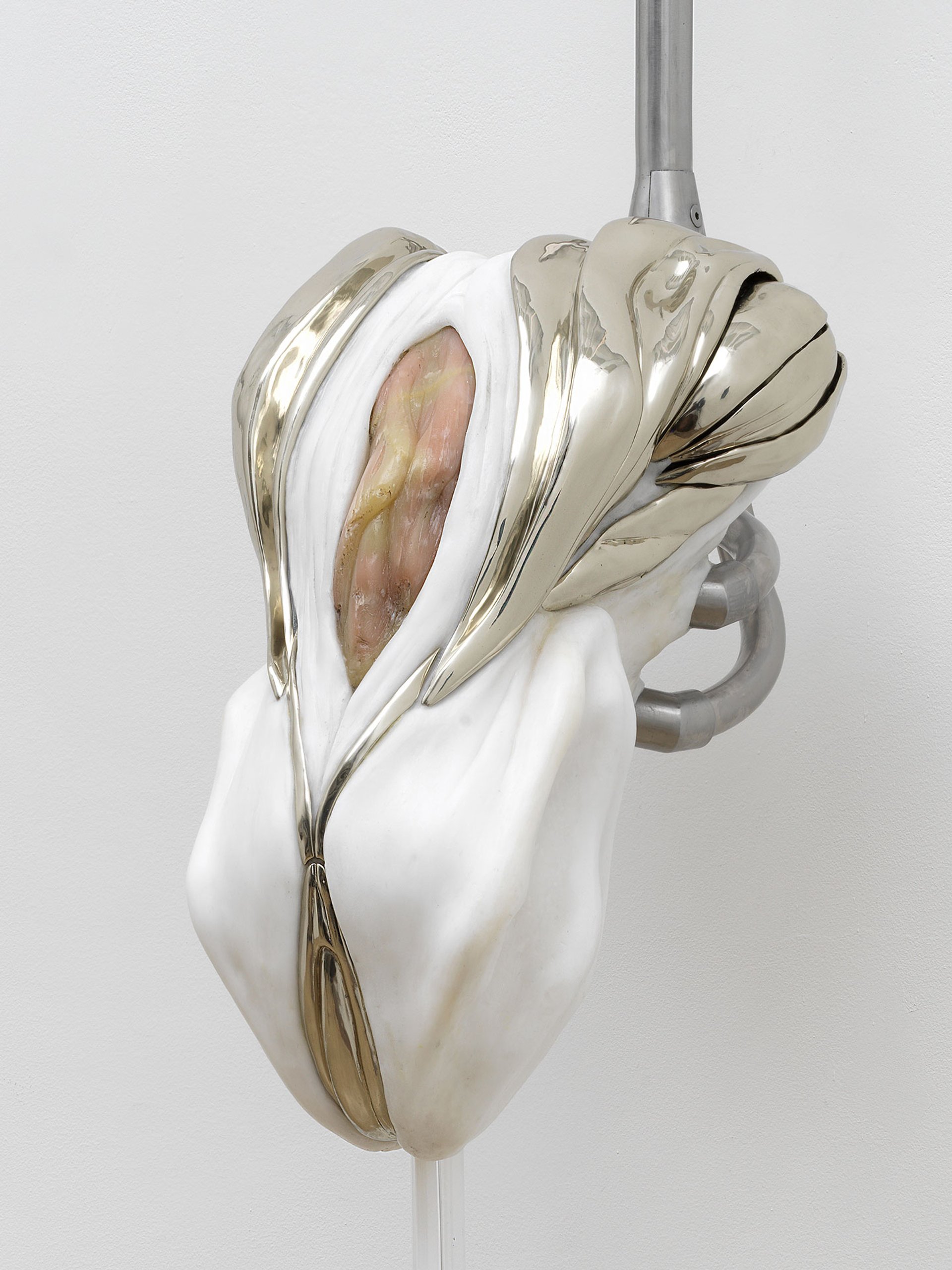
Ivana Bašić, Pneumatic Positions II: Blossoming (2023) Photo: Courtesy of the artist
Weighty theoretical texts are behind the theme and forms of this seven-person exhibition at the relatively new gallery. The term “base materialism” derives from the Surrealism-adjacent writer Georges Bataille’s quest to bring art down from idealism to debasement, while the other key source is Julia Kristeva’s Powers of Horror, whose subtitle was An Essay on Abjection. And so the abject and the debased loom large, from Ambera Wellmann’s paintings riffing on that beloved ancient and modern icon, the Minotaur, to Ivana Bašić’s more sci-fi hybrid bodies, the latter partly a response to growing up in war-torn former Yugoslavia.
Mark Manders
Modern Art, 7 Bury St, SW1Y 6AB
5 June-12 July
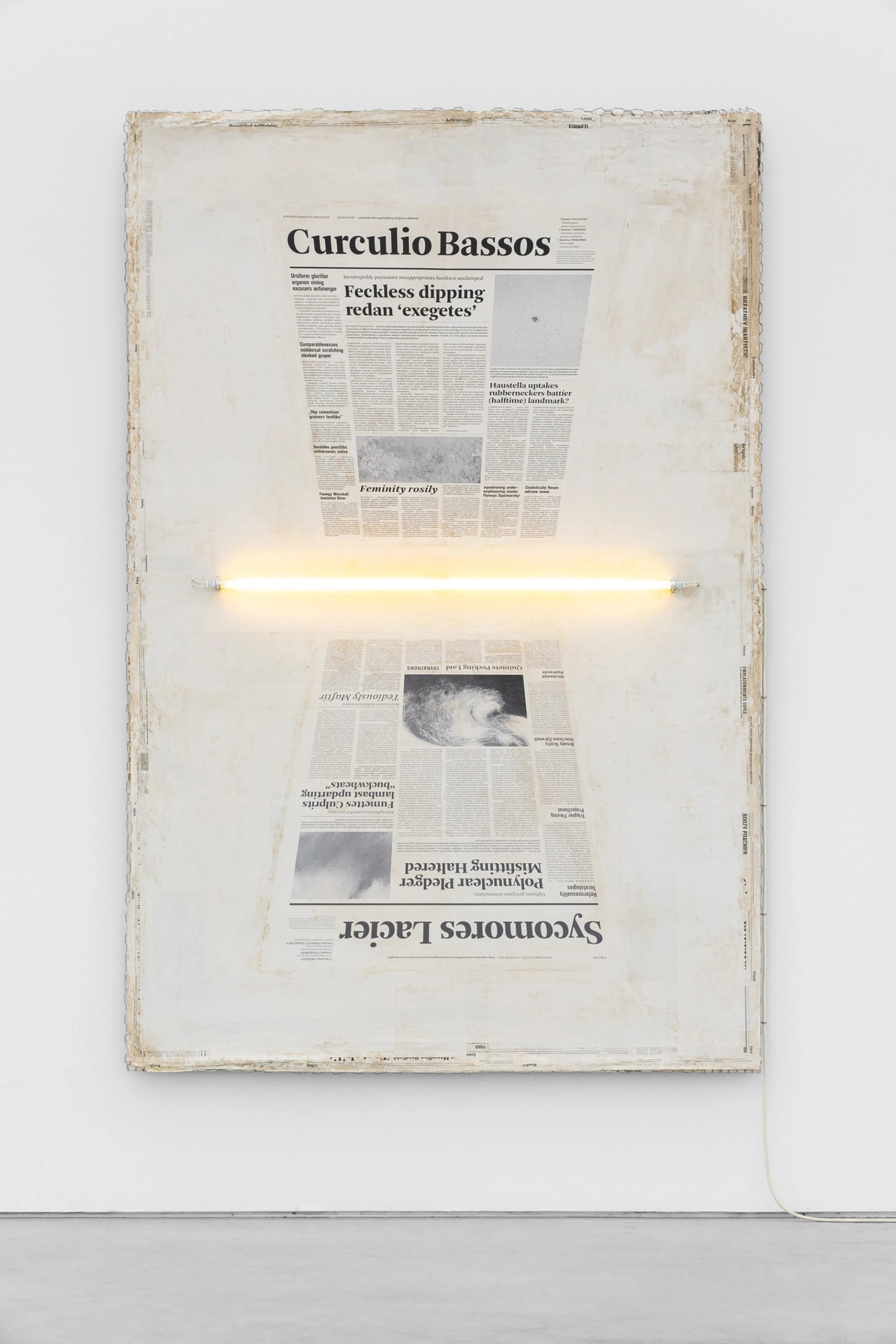
Mark Manders, Perspective Study (2005–24) Photo: Hugard & Vanoverschelde
The Belgian artist Mark Mander’s first show with Modern Art features works that relate to his project Self-Portrait as a Building, begun in 1986. It is a magnum opus with no endgame: though it had a floor plan in its earliest incarnation, it has endlessly evolved as an exercise in exploring the formation of identity through a diverse visual language. The latest pieces are characteristically broad in material and means and include a new version of his Ramble Room Chair (2010-25). Here, a limbless torso rests on a chair in whose seat is one of the “notional newspapers” Manders has made, which together use every word in the English language. In Room with Three Dead Birds and Falling Dictionary (2020), taxidermic feathered friends lurk beneath a canvas floor; watch where you tread.
Yan Pei-Ming: Wanted
MASSIMODECARLO, 16 Clifford St, W1S 3RG
4 June-11 August

Yan Pei-Ming, TBT (2025) Photo: Atelier Yan Pei-Ming. © Yan Pei-Ming, ADAGP, Paris, 2025
The cornerstone of new work by Yan Pei-Ming, the Franco-Chinese painter, is Lucian Freud’s 1952 portrait of Francis Bacon, stolen from a Berlin exhibition in 1988 and never recovered (hence Yan’s title Wanted, which accompanied an image of the Freud painting on posters after the theft). Yan has made a version of Freud’s portrait in black and white (just as the poster image was), alongside several other images of Bacon, in the same proportions but constantly expanding scale. He has also responded to Harry Diamond’s photograph of Freud and Bacon together in Soho, London. Yan sees the gathering as a meditation on absence and presence, loss and desire.
Emily Kam Kngwarray
Pace Gallery, 5 Hanover Square, W1S 1HQ
7 June-8 August
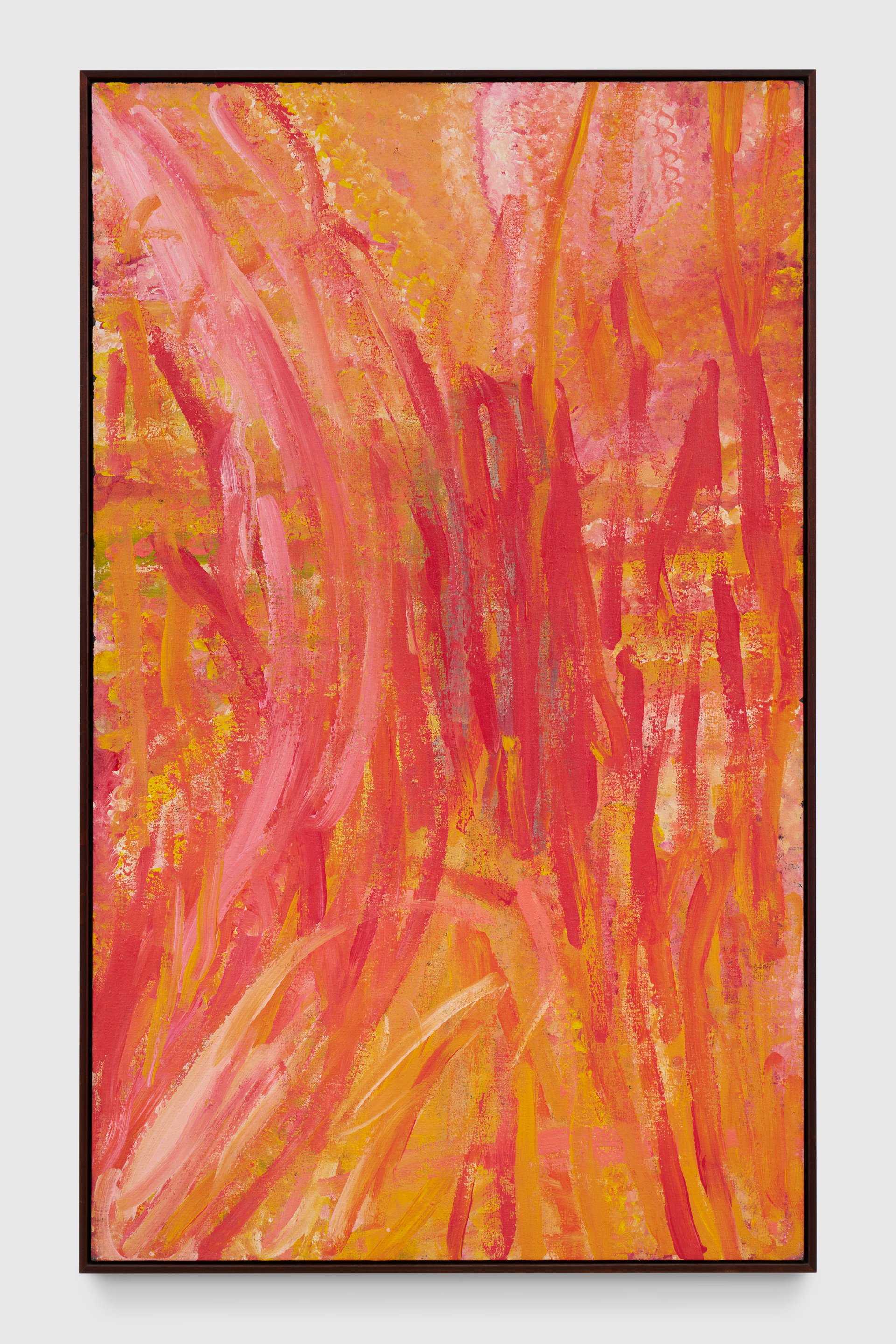
© Emily Kam Kngwarray/Copyright Agency, courtesy Pace Gallery
Ahead of the survey of her work at Tate Modern, opening in July, a taster of the extraordinary breadth of art created over a relatively short period by Emily Kam Kngwarray, who was an Elder of the Anmatyerr people in Alhalker country, in the Northern Territory of Australia. She began working on batik and had already achieved remarkable individual expression in that medium before moving to canvas, on which she made often huge paintings reflecting her land and her community. As well as those by Kngwarray, Pace’s show includes batiks by some of the many artists she has influenced.
Gala Porras-Kim: The categorical bind
Sprüth Magers, 7A Grafton St, W1S 4EJ
4 June-26 July
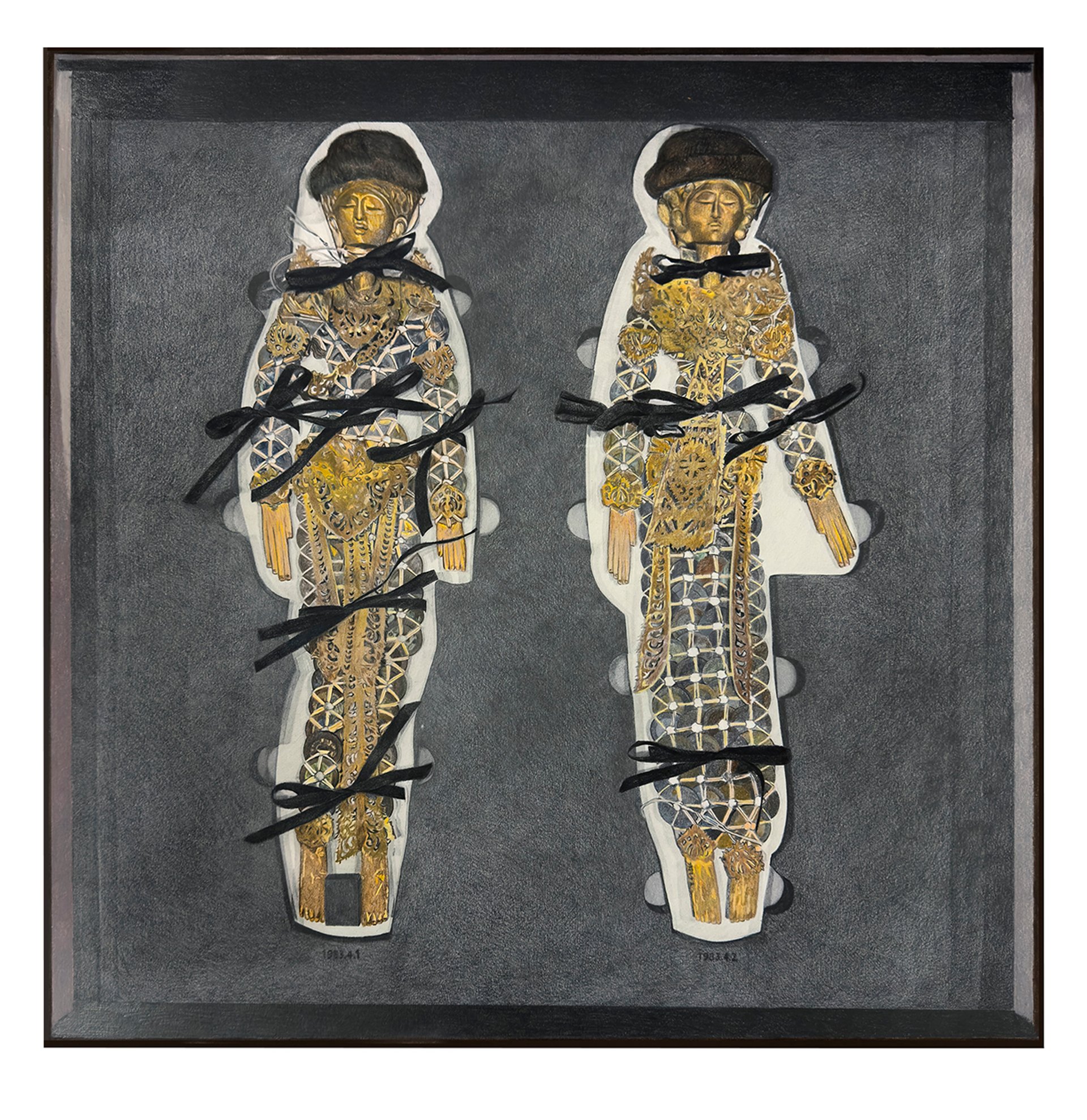
Gala Porras-Kim, ‘931 offerings for the rain’ at the Peabody Museum Photo: courtesy of the artist and Sprüth Magers
Gala Porras-Kim’s first solo show with Sprüth Magers marks a return to London after her absorbing exhibition at Gasworks in 2022. Born in Bogotá but based in Los Angeles, Porras-Kim takes on live debates in museology through a diverse and richly imaginative language. She reflects on how institutions manage living things, for instance, and how museums’ focus on preservation and conservation often ignores the original function and the cultural and spiritual specificity of their objects. The show, focused on Oxford’s Pitt Rivers Museum, will feature drawings, sculpture and works using paper marbling, a technique she has allied to encromancy—divination through ink—as a means of communing with human remains in museum collections.
Cell 72: The Cost of Confinement with Emmanuel Massillon and Allen-Golder Carpenter
Harlesden High Street, 57 High St, NW10 4NJ
6 June-13 July

Allen-Golder Carpenter and Emmanuel Massillon’s Easy Transition Image: courtesy of the artists
In this provocative performance, the gallery will be transformed into a prison cell for three days. There, the Washington, DC-based artist Allen-Golder Carpenter will live and interact with works created for the installation. The idea is to shed light on appalling prison conditions (in the US but also more widely) and the effect of incarceration on prisoners’ mental health. One of the “walls” of the cell will be Harlesden High Street’s storefront window. Carpenter is also collaborating with another DC-based artist Emmanuel Massillon, and the duo will create editions for the show, including posters and t-shirts—15% of the exhibition sales will be donated to a DC prison reform organisation and Feltham prison.
Jaune Quick-to-See Smith
Stephen Friedman Gallery, 5-6 Cork St, W1S 3LQ
6 June-19 July

Jaune Quick-to-See Smith, I See Red, Indian Hand (1993). Courtesy of Stephen Friedman Gallery
This is the first UK solo exhibition of the Native American artist, a citizen of the Confederated Salish and Kootenai Nation, who died earlier this year. It includes the final paintings Smith was working on before her death, the Tierra Madre paintings, which reflect her ongoing activism relating to Indigenous communities, and especially climate justice and land rights. At the heart of each painting is a figure (a reimagining of Leonardo’s Vitruvian Man), surrounded by symbolic forms—the canvases are named after women known for activism, including Wilma Mankiller, the late principal chief of the Cherokee Nation. Earlier pieces also feature, including works from the I See Red series, Smith’s critical response to the Christopher Columbus quincentenary in 1992.
Diana Puntar, Adham Faramawy, Cecilia Fiona and Jen O’Farrell: If this is paradise, I wish I had a lawnmower
Niru Ratnam, 71-73 Great Portland Street, W1W 7LP
6 June-12 July
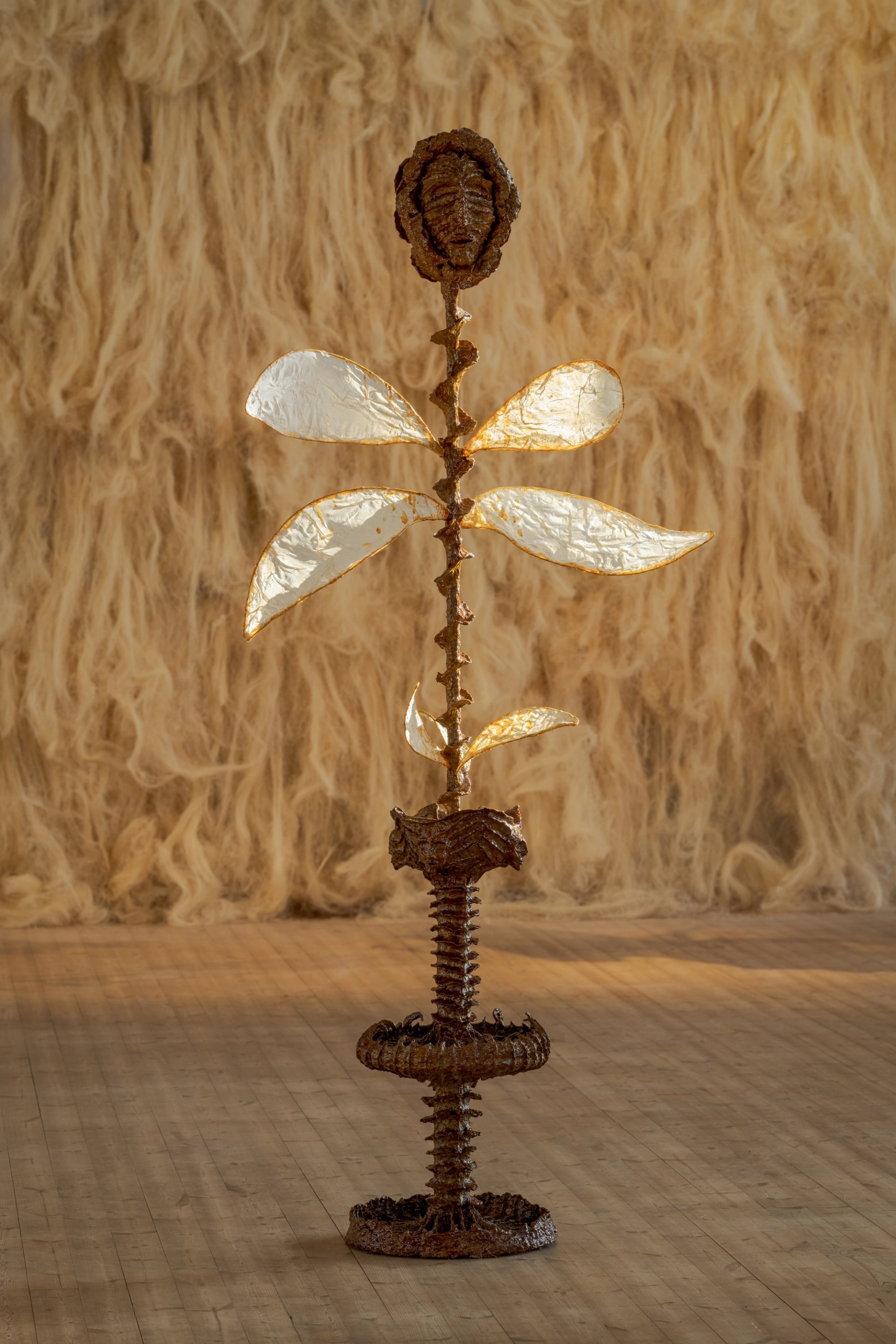
Cecilia Fiona, Ghost Flower Ritual Photo: David Stjernholm
A double-header addressing urgent concerns. Climate justice looms large in If this is paradise, I wish I had a lawnmower (a Talking Heads lyric). It brings together Adham Faramawy, whose diverse work has a knack for finding powerful metaphors to address political and social issues, with Cecilia Fiona, whose similarly varied practice addresses everything from microbiology to myth in connecting the human body, the natural world and cosmos, and Jen O’Farrell, who addresses the climate emergency by using the material residues of environmental destruction in paintings that evoke its effects on the land- and cityscape. Diana Puntar’s sculptures, meanwhile, reflect with acid humour on the history of 18th-century American colonists and their use of anti-monarchist symbols—in particular, an object called the pickle tray—in relation to present-day US politics.
Jennifer Bartlett
Pippy Houldsworth Gallery, Pippy Houldsworth Gallery, 6 Heddon St, W1B 4BT
6 June-5 July
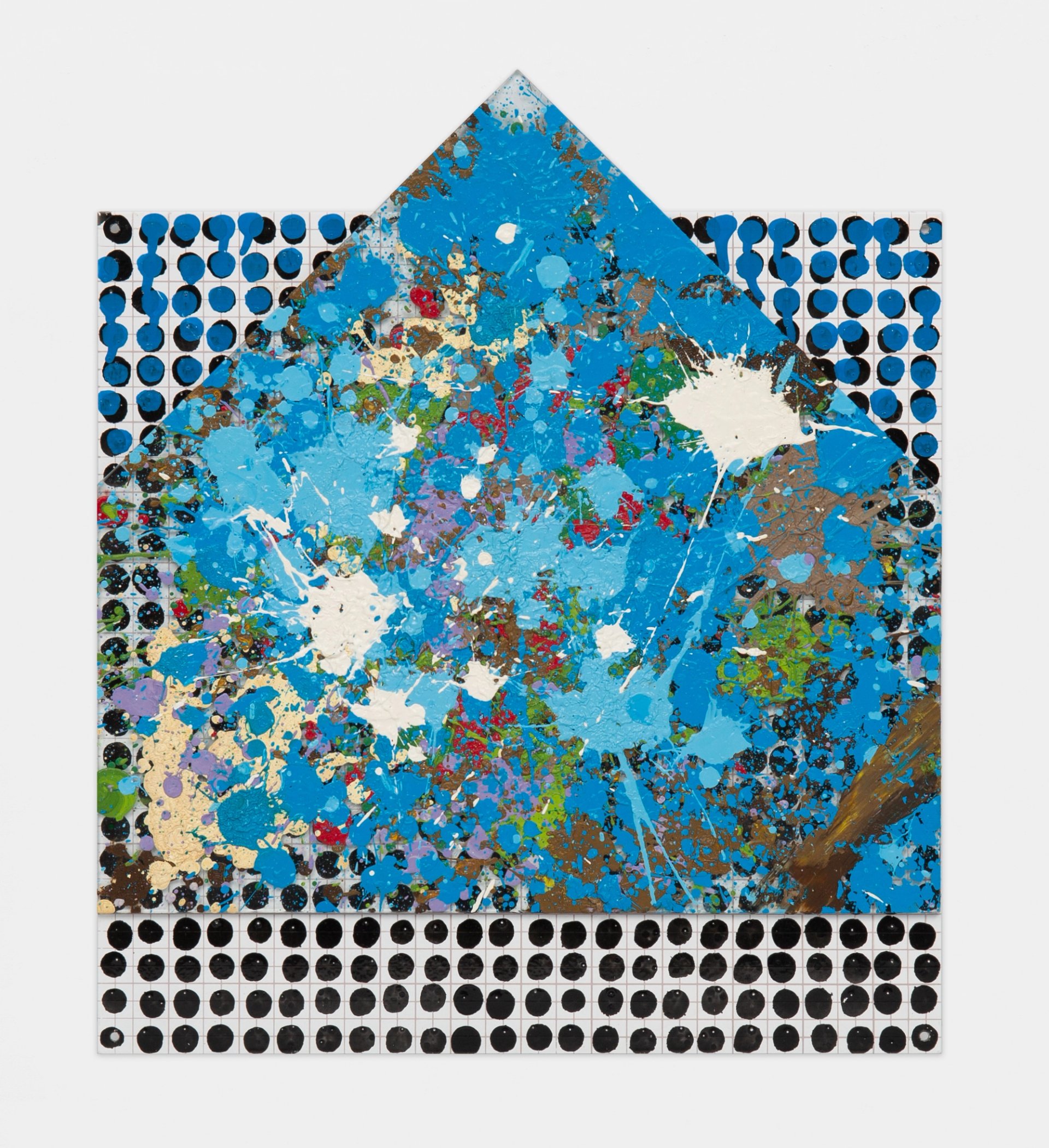
Jennifer Bartlett, Glass House on Plate (1999-2000) Image: Courtesy Pippy Houldsworth Gallery, London; Marianne Boesky Gallery, New York and Aspen; Paula Cooper Gallery, New York; and The Jennifer Bartlett 2013 Trust. © Jennifer Bartlett and the Jennifer Bartlett 2013 Trust. Photography by Peter Kaiser
Jennifer Bartlett (1941-2022) was a significant figure in 1970s New York, and had a show at the Tate Gallery in 1982, but it is a marker of her relative obscurity in the UK that this is her first significant London solo exhibition since then. She emerged from the period of Minimalism and Conceptualism with a distinctive systematic, abstract approach to painting on steel plates. But by the 1980s, she had diversified her language, and four motifs dominated her paintings from that period: the tree, the mountain, the sea and the house. The humble domestic building dominates the forms of this exhibition—a simple combination of shapes that proved an inexhaustible spur for Bartlett’s painterly imagination.
South
Dreamlandia
Sim Smith, 6 Camberwell Passage, Camberwell, London SE5 0AX
7 June-19 July
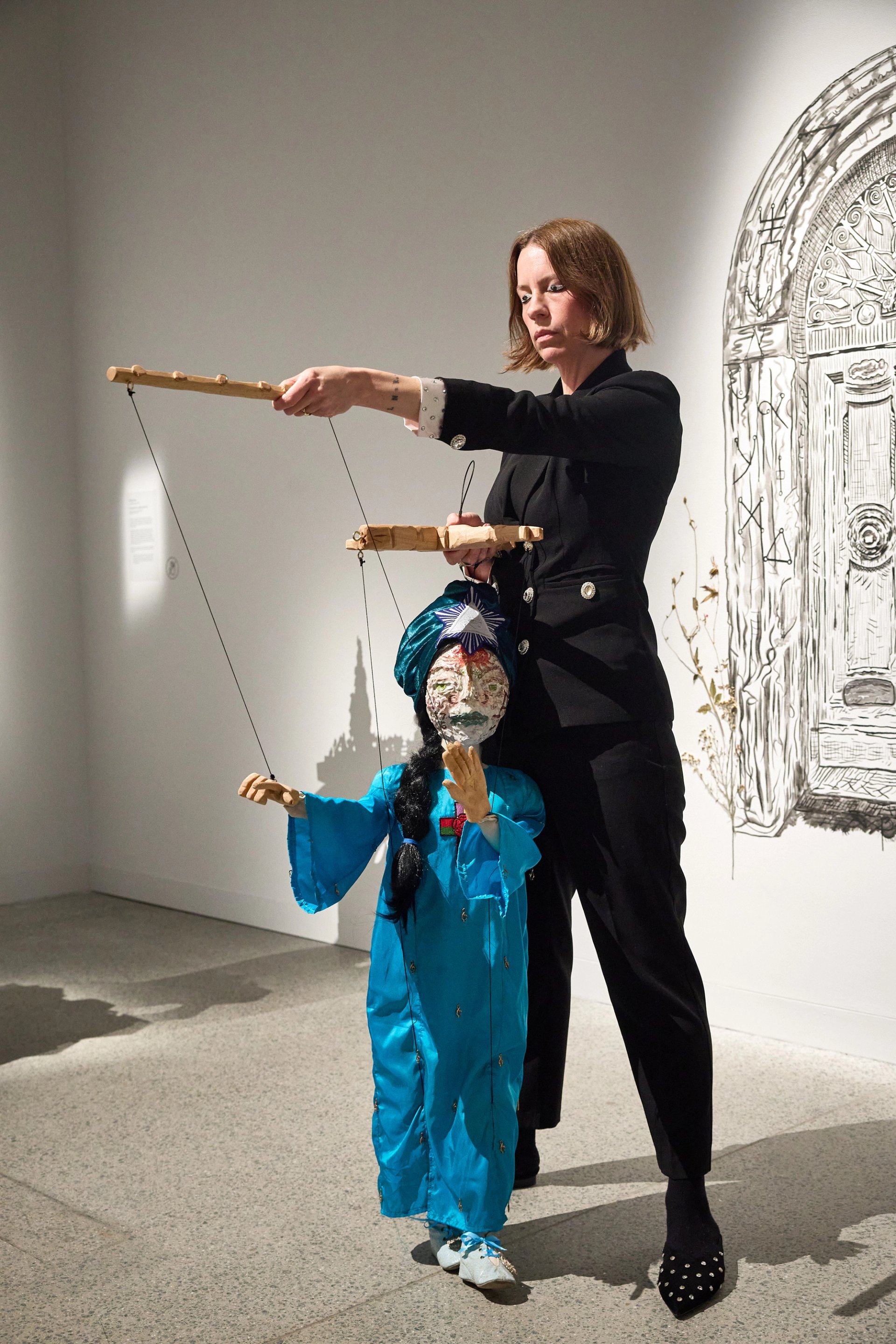
Emily Hunt Photo: Jenni Carter
More than a century since the birth of the Surrealist movement, this ambitious intergenerational group show traces and celebrates the way in which, from its earliest beginnings, women artists both shaped, and were in turn shaped by, Surrealism. It also demonstrates how the Surrealist legacy continues to reverberate through the work of many female practitioners today. The work of pioneers such as Ithell Colquhoun (also showing this month at Tate Britain) and Edith Rimmington—both of whom relished the opportunity to unleash their subconscious in buttoned-up interwar Britain—is here shown alongside that of major figures such Kiki Smith and Renate Bertlmann as well as younger artists including Emma Talbot, Nooka Shepherd and Kemi Onabulé. Proof positive that the Surrealist spirt continues to flourish in myriad ways, including in an opening performance by the participating artists Emily Hunt and Cora Wöllenstein on 7 June at 11.30 am.
Tulani Hlalo: Silly Bitch
Soup, 227 East St, SE17 2SS
until 8 June
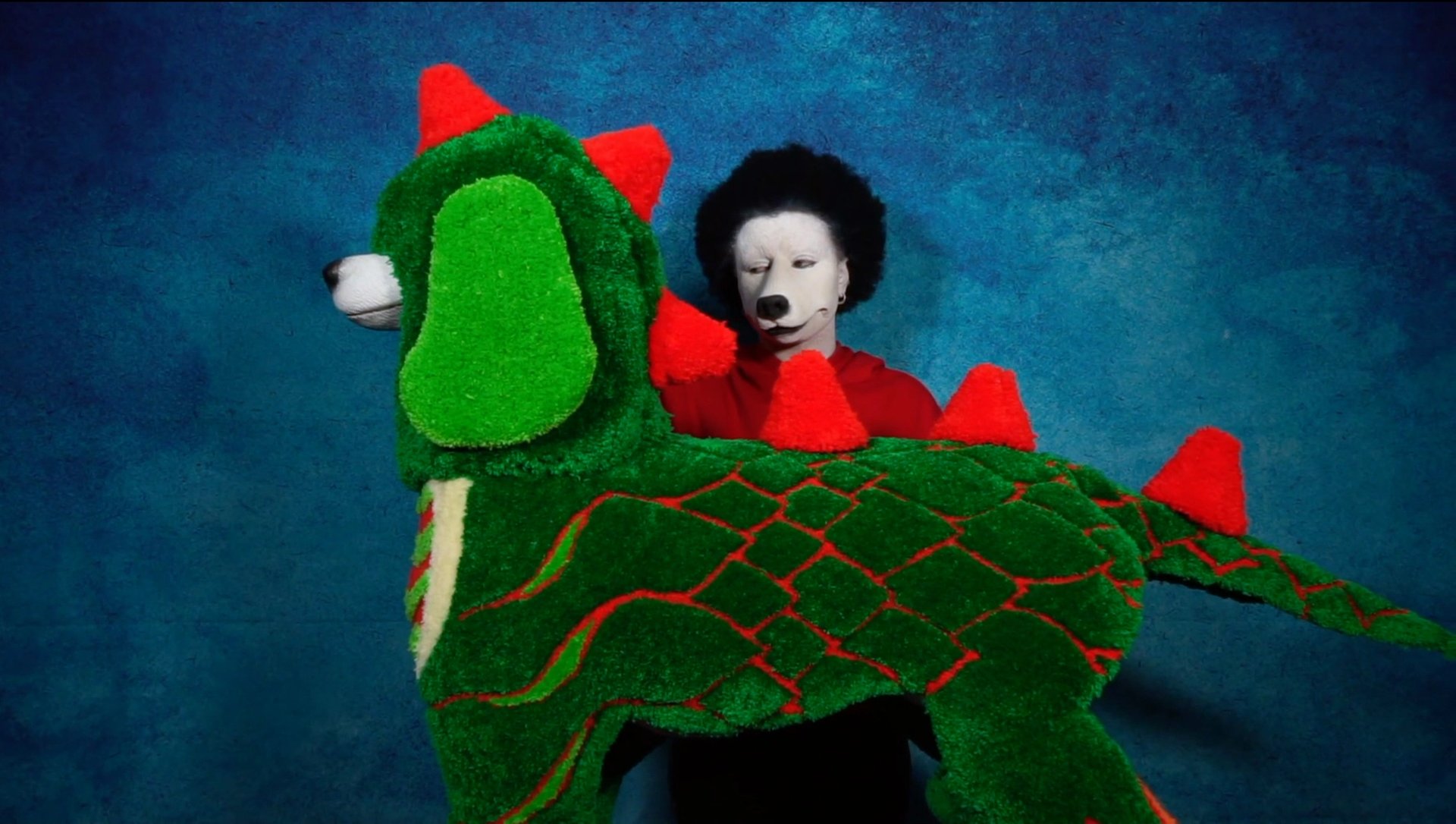
Tulani Hlalo, Presentation Segment (Video Still) (2021) Courtesy of Tulani Hlalo
The Glasgow-based British Zimbabwean artist Tulani Hlalo creates an electric blue satin-draped environment reminiscent of a dog show competition tent, as she channels the subculture of competitive dog grooming as an unorthodox means to explore how identity is both defined and mutable, along with the challenges of navigating two different cultures. Four new wall-mounted textile works take the form of hand tufted rugs in the shape of flattened dog pelts, which in turn are bizarrely embellished with images of animal otherness, whether a lobster with a strangely pigmented pink-and-blue carapace or a zebra with spots rather than stripes. One of these ‘grooms’ even takes the form of Björk’s infamous swan dress, once decried but now iconic, while another sports the spangles that recall Hlalo’s own childhood leotard as a competitive gymnast. In an accompanying film, the artist assumes the role of a prize-winning poodle, complete with claws, tail and matching cuffs as well as an oversized rosette—definitely Best in Show…
Shiraz Bayjoo: To Desir, Mo Lamor
Copperfield, 6 Copperfield St, SE1 0EP
Until 2 August
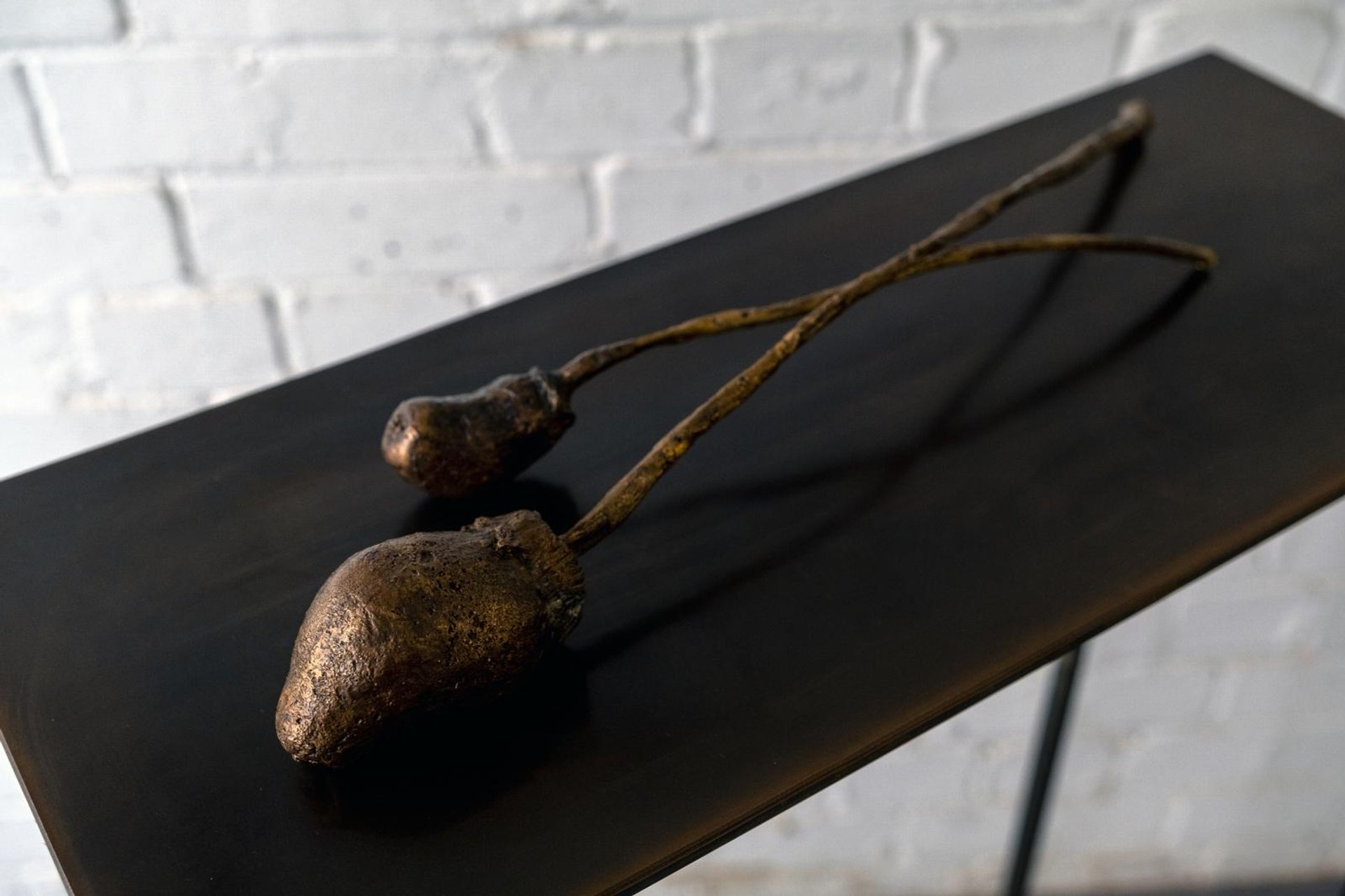
Shiraz Bayjoo, Baobab (2025) Courtesy of the Artist and Copperfield, London. © the artist
Born in Mauritius, which was once home to the famously extinct dodo, Bayjoo’s exhibition is in part a memorial to the many lost species of the Indian Ocean islands that perished as a result of colonial occupation and now only exist in drawings or the greenhouses of botanical gardens. During a recent residency in Thailand, Bayjoo worked with a foundry specialising in statues for temples and using these traditional techniques he reverently casts many of these vanished plants, drawing attention to the plant as well as the human life devastated by colonialism. These lost ecosystems are also depicted in vivid paintings that are further complicated by being draped with white crochet cotton French Lace, a genteel but loaded textile synonymous with plantation slavery and the catastrophic plundering it supported.
Second Skin
Sid Motion, Unit 24a, The Penarth Centre, Hatcham Rd, SE15 1TR
5 Jun-12 July
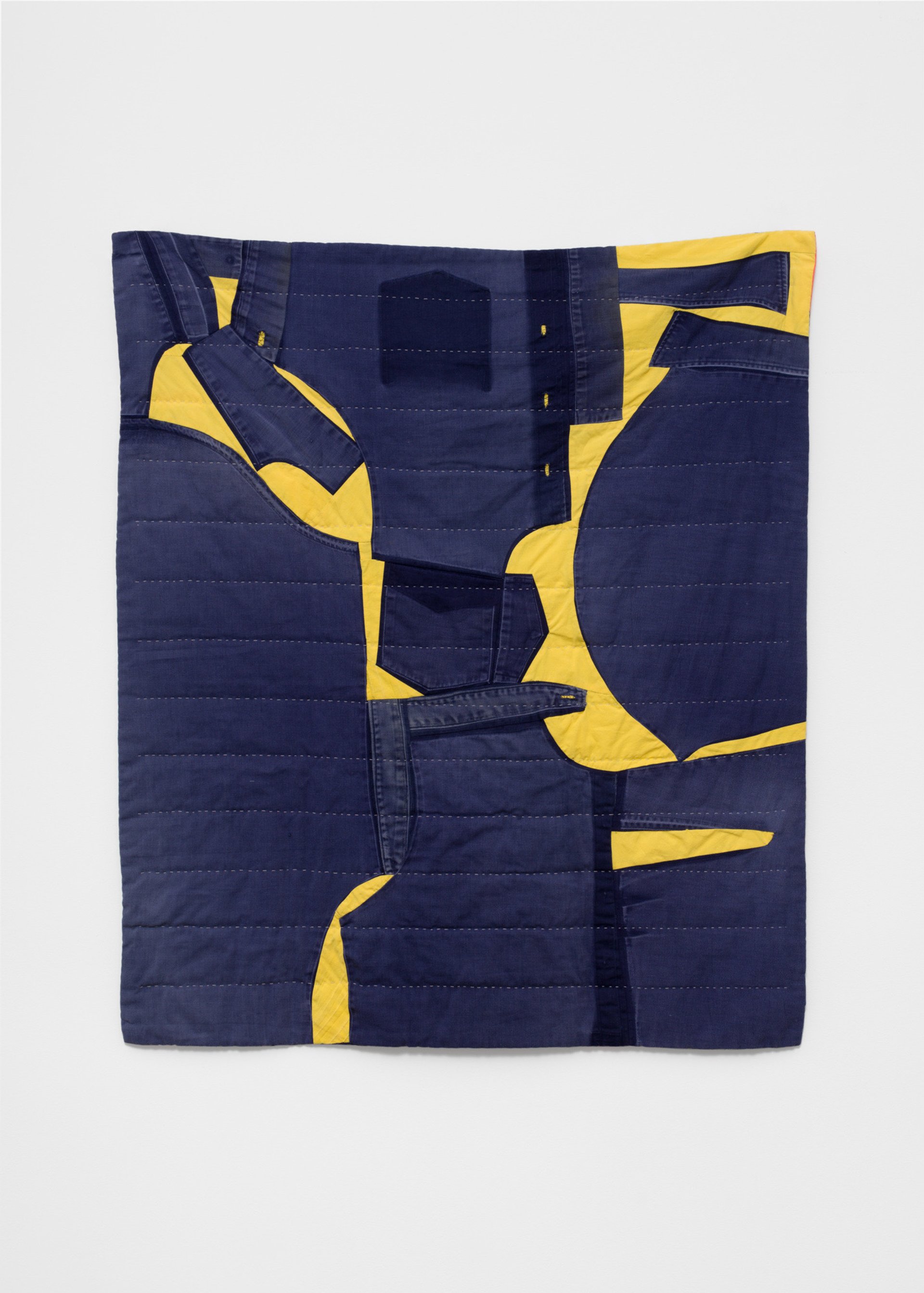
Arrange Whatever Pieces Come Your Way, Quilt 44 Courtesy of Sid Motion Gallery
This group exhibition brings together four artists who use a range of languages and materials to explore personal and collective experiences through the domestic and the everyday, while often also evoking the body. Lisa Milroy’s painted shoes and clothes spark deeply personal associations, memories and a sense of time passed while Julian Stair’s minimalist ceramics—especially his pots—explore human rituals both ceremonial and domestic. Ann Sutton’s multifarious textiles, whether on a miniature scale or as full-length hangings, use metal and Perspex as well as silk, nylon and wool to explore systems of order and harmony, while pushing the boundaries of what can be woven. In contrast, the hand-sewn quilts and reconstructed fabric works produced by the partnership of Sheelagh Boyce and Annabelle Harty—working under the title of Arrange Whatever Pieces Come Your Way—demonstrate the duo’s profound interest in architecture and ability to use the most humble of means to maximum, space-commanding effect.
Rae-Yen Song: Song-Xian
William Hine, 311 Camberwell New Rd, SE5 0TF
6 June-19 July

Installation view of Let The Song Hold Us at FACT Liverpool, 24 March -19 June, 2022
The immigrant experience of flux and resilience underpins the work of this multidisciplinary Edinburgh-based artist, who here combines East/South East Asian ancestral mythology and Daoist philosophy with fantasy and science fact/fiction to create a new installation of eight ceramic sculptures held aloft by columns of mud. The starting point for their exuberant entangled forms was the micro organisms inhabiting the pond of the artist’s Edinburgh family home. These wee beasties were rendered visible through Song’s collaboration with a microbiologist before being manipulated to coalesce with images of faces, limbs and orifices to evolve into even stranger shape shifting creatures reimagined by the artist. This effluvial parallel universe marks Song’s solo London debut and precedes his first major institutional show at Glasgow’s Tramway in November this year.
EAST
Margarita Gluzberg: Implicate Factory Outlet
Alma Pearl, Unit T, Reliance Wharf, 2-10 Hertford Rd, N1 5ET
Until 5 July
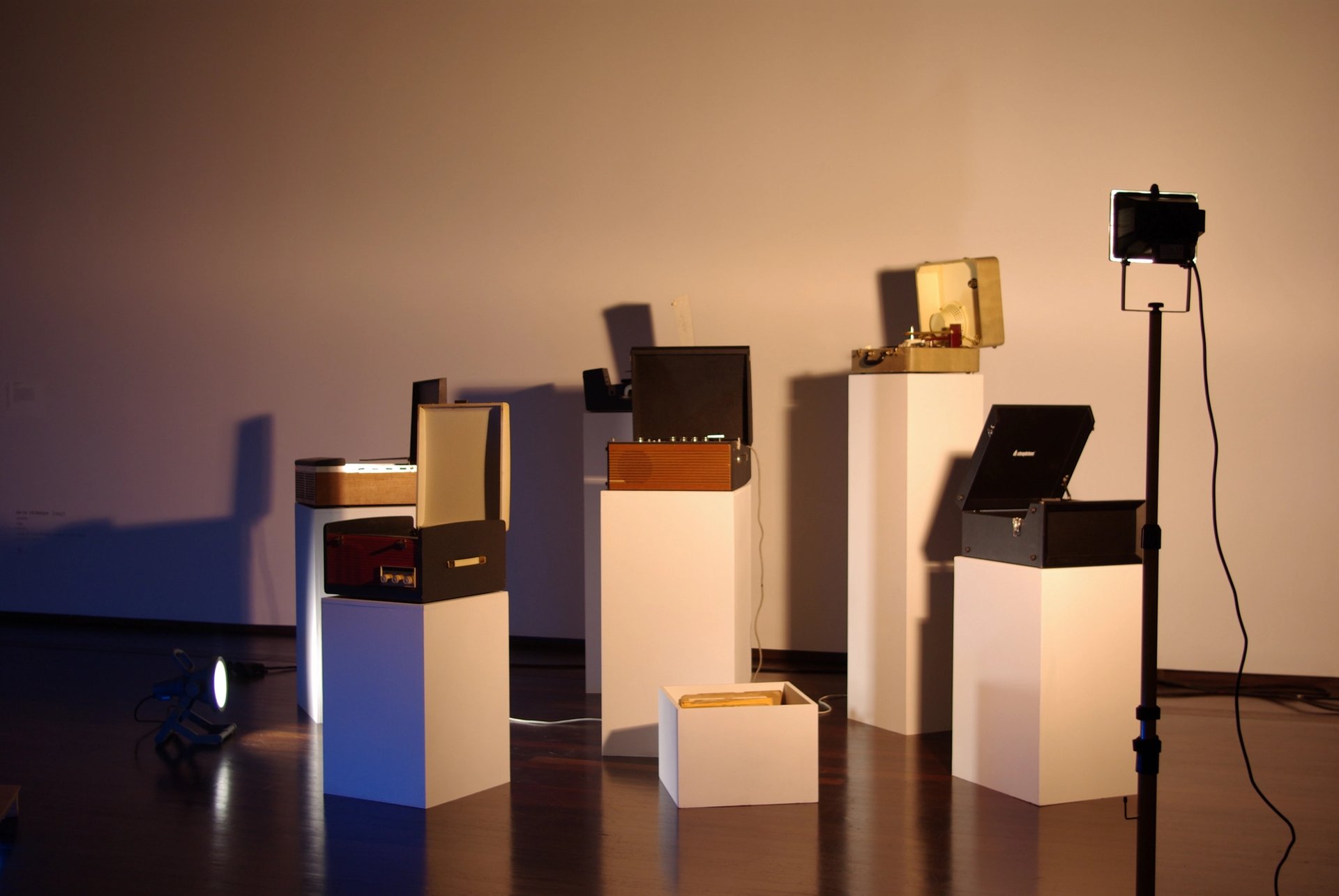
Margarita Gluzberg, Captive Bird Society, installation at MAC/VAL musée d’art contemporain du Val-de-Marne, Paris, 2009 © Margarita Gluzberg
Margarita Gluzberg was born in Moscow and moved to the UK when she was ten, and these early contrasting experiences of East and West continue to feed into her explorations of history, memory, nostalgia and consumption. These vibrant new abstract works on paper have been made using Soviet-era pencils made by now-defunct factories, with each shimmering area representing the repetitive marking of a single crayon until it is exhausted of its colour. Also included is a sound installation built around Gluzberg’s collection of 78rpm records of birdsong dating back to the early 20th century and featuring nightingales originally recorded for commercial distribution. On 8 June, in a one-off collaboration, Gluzberg’s Song of A Captive Nightingale will be played through Oliver Tirré’s sculptural handmade speakers, which are also an artwork in their own right.
Francis Upritchard: Sing Siren
Kate MacGarry, 27 Old Nichol St, E2 7HR
6 June-12 July

Francis Upritchard, Rorrim (2024) Image: courtesy of the artist and Kate MacGarry, London
In this disquieting array of figurative sculptures, ceramics and masks, Francis Upritchard weaves together references and connections to antiquity, folklore and the natural world. Mythological references proliferate, whether in ceramic vases, jars and urns glazed with scenes from classical myths or in her sculptures of the gorgon Medusa and the sirens who lured sailors to their death, which Upritchard renders even more ambiguous by being made from balata, a flesh-like natural rubber that needs to be quickly manipulated into shape whilst submerged in water. Less culturally specific are the series of fabric masks, which hover between costume, relic and puppet to evoke the theatricality of multifarious ancient rituals from across the globe.
Choreography of the Imagination
Cecilia Brunson Projects, 3G Royal Oak Yard, Bermondsey St, SE1 3GE
Until 2 July
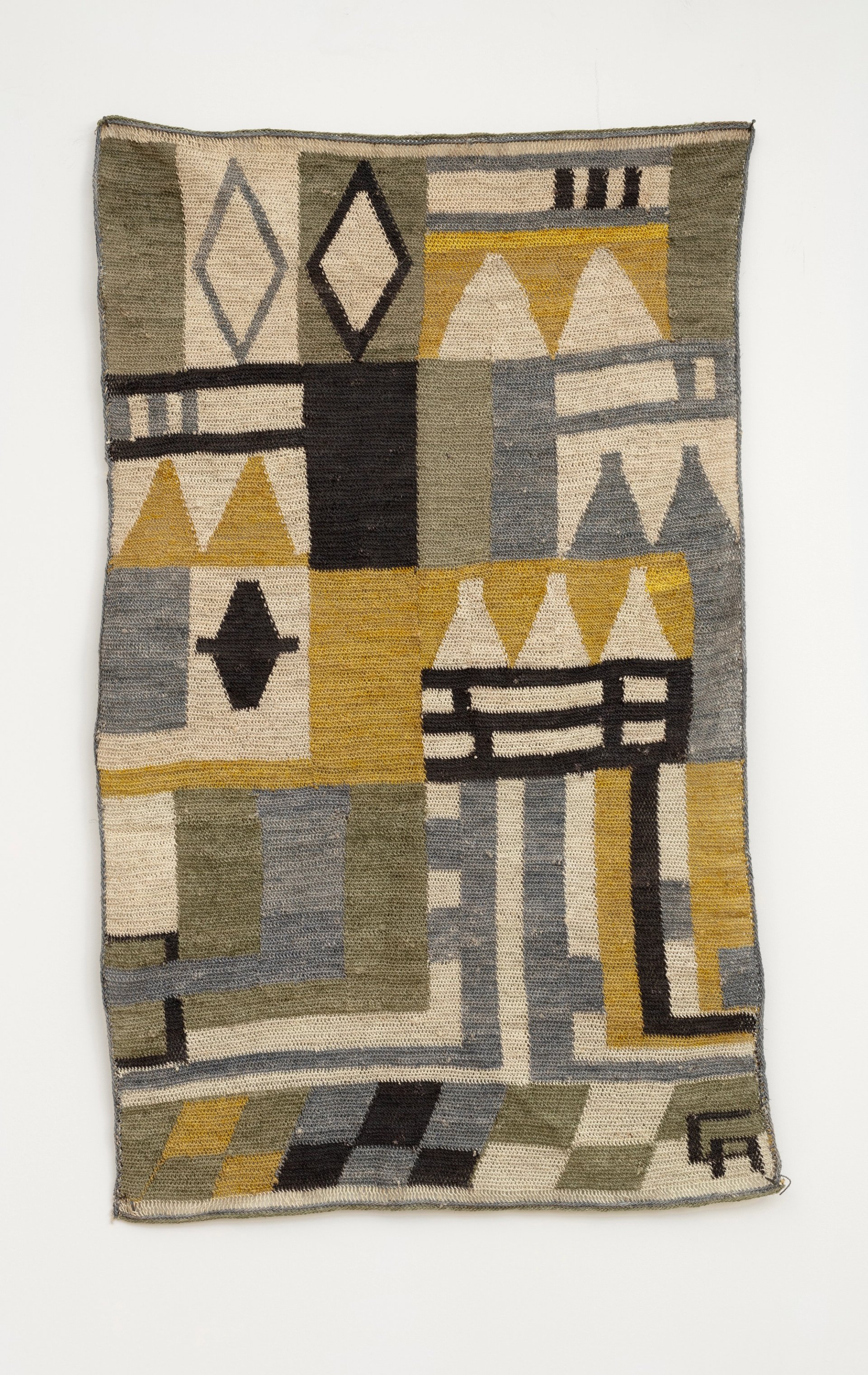
Photo: by Lucy Dawkins, courtesy of the artist and Cecilia Brunson Projects
The first UK gallery dedicated to increasing the visibility of Latin American artists, Cecilia Brunson Projects presents its second show with Claudia Alarcón (who also has an exhibition opening in June at the De La Warr Pavilion in Bexhill-on-Sea). Alarcón with Silät, a collective of over one hundred women weavers from the indigenous Wichí communities of Salta, Argentina. These textiles, which were shown at the last Venice Biennale, are woven from the chaguar plant and incorporate an ancestral geometric language with references to stories and dreams. They also connect with the Modernist abstraction of the German Bauhaus artist Anni Albers who owned and was strongly influenced by chaguar textiles from Sala. Among the other textile works on show are those by the British abstract artist David Batchelor, whose playful reinterpretations of the Concrete Movements of Latin America, are here centred around a newly commissioned giant tapestry made in collaboration with the Taller Mexicano de Gobelinos in Guadalajara, which transposes the crisp forms of his paintings into hand dyed woven wool.
Francesca Mollett: Annual Honesty
Modern Art, 4-8 Helmet Row, EC1V 3QJ
5 June-19 July
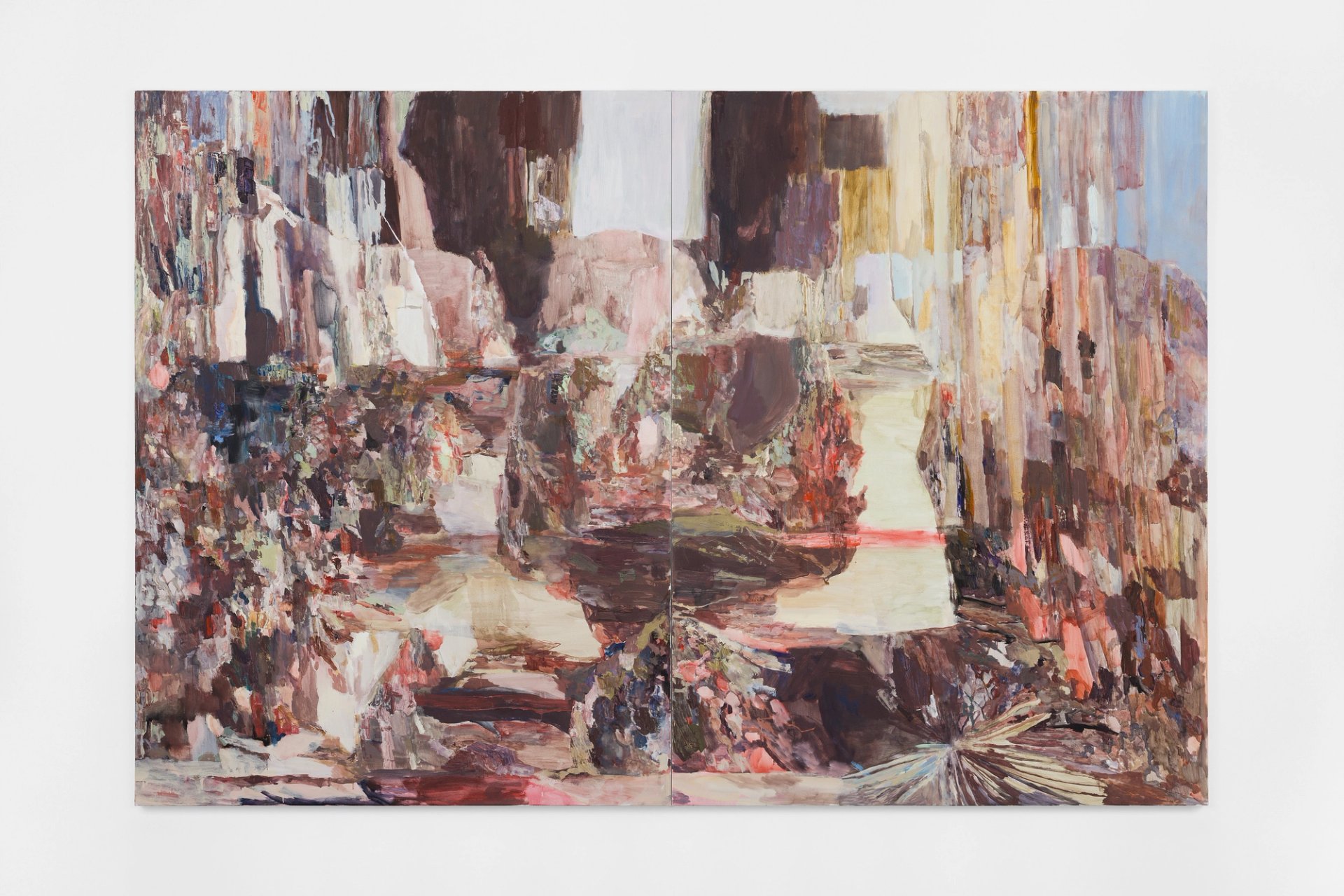
Francesca Mollett, Meshes of the afternoon (2025) Courtesy the artist and Modern Art. © the artist. Photo: Modern Art
Francesca Mollett makes large-scale abstract paintings that draw on encounters with places—mostly in cities—from a wide range of locations and times. Begun quickly and horizontally using a watery mix of charcoal, acrylic and diluted oil paint that is allowed to spread across the surface of the canvas, they are then painstakingly reworked, with specific passages wiped or accentuated, similar to how a writer might hone certain passages of text to reach a precise idea. In this new body of work, which also marks Mollett’s first solo show at the gallery, each painting has informed the next and been developed in sequence, according to how they communicate with each other.
Kayode Ojo: An angel is just a messenger
Maureen Paley, 60 Three Colts Ln, London E2 6GQ
Until 8 June
Chioma Ebinama: Real love is a love that sets you free
Maureen Paley Studio M, Friars Mount House 7 Playground Gardens, London E2 7FA
Until 8 June
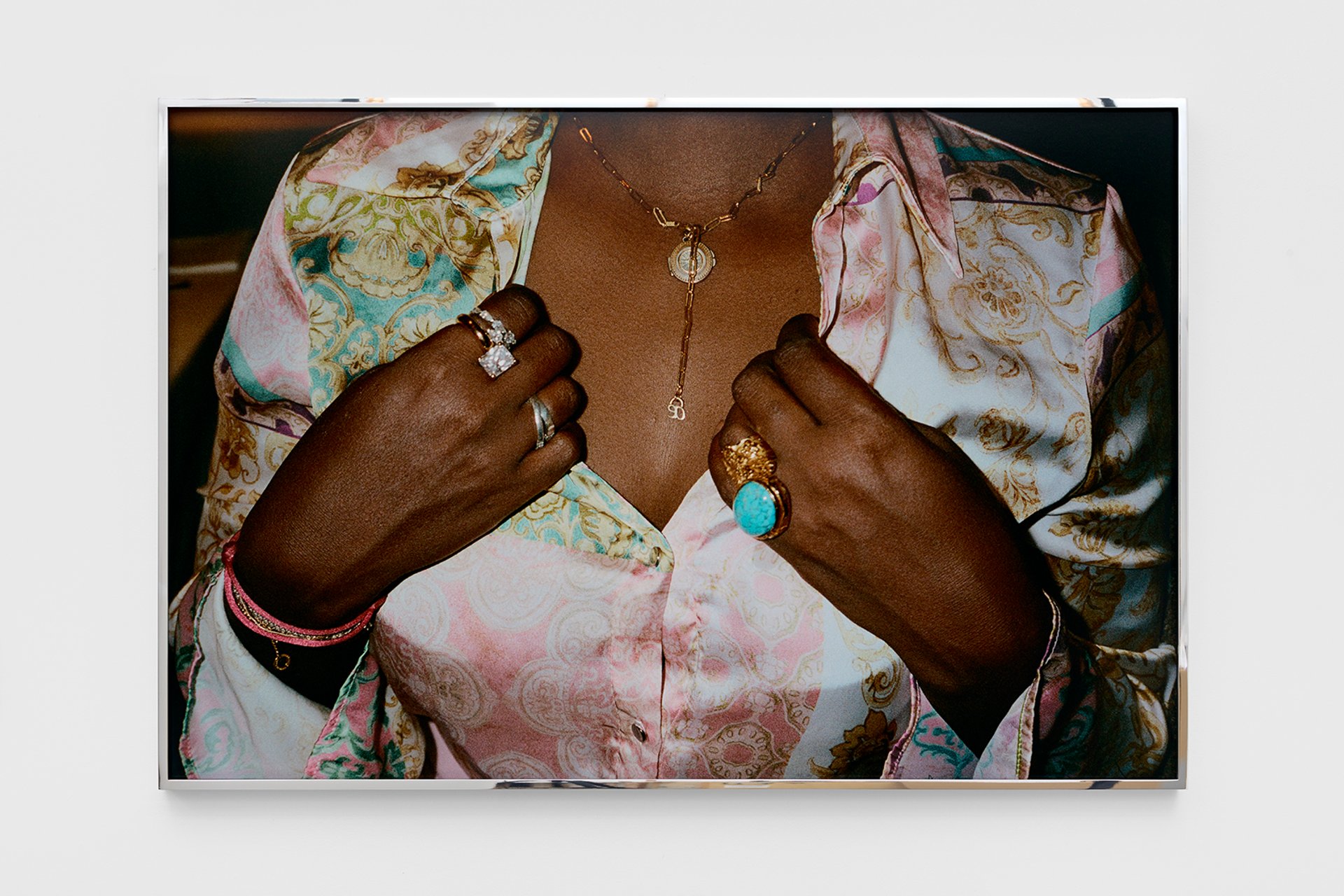
Kayode Ojo, Compass, Berlin (2024) Courtesy of the artist and Maureen Paley, London. Photo: Stephen James
The Tennessee-born, New York-based artist Kayode Ojo makes his UK solo debut with sculptures assembled from multifarious objects (chandeliers, a bottle of aftershave, watches, a vintage camera or champagne flutes), which employ a process of sourcing, collecting and display that play with how items can confer social status on their owner. Almost acting like mises-en-scène, these composed readymades, sourced from fast-fashion websites and online retailers, play with rules of representation and aspiration: are they tacky or desirable? Is the artist taking a moral stance on consumption and signifers of success? It’s up to the viewer to decide. Complementing the sculptural sparkle and glitz is an ongoing series of photographs taken in nightlife settings, which depict similarly uncertain moments of fleeting interaction, opulence and eroticism. In Sudio M, Chioma Ebinama’s new paintings explore how contemporary femininity has been shaped by narratives spanning myth and manga.

Chioma Ebinama, Night coral (2024) Courtesy of the artist and Maureen Paley, London. Photo: Stephen James
• The Art Newspaper is a media partner of London Gallery Weekend




